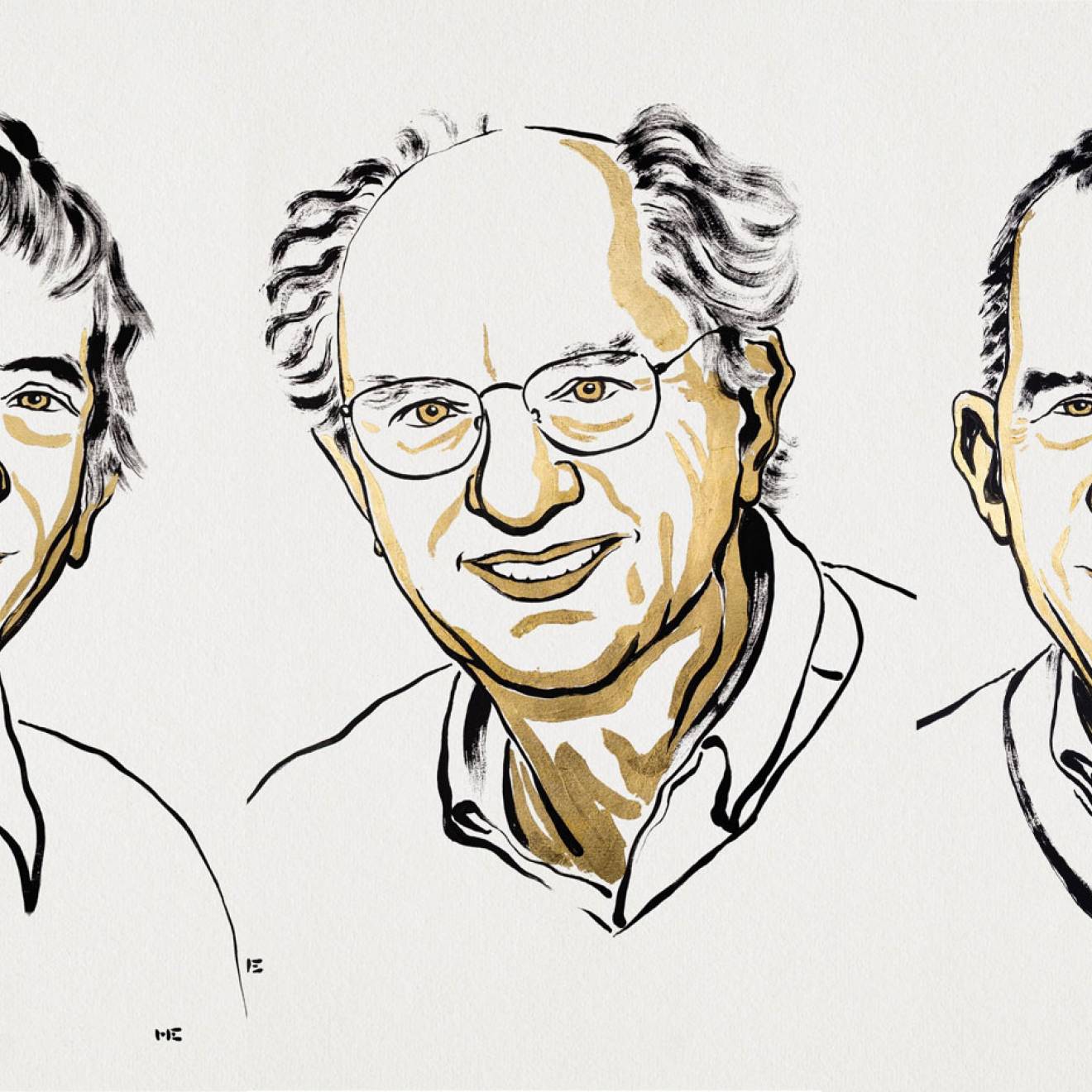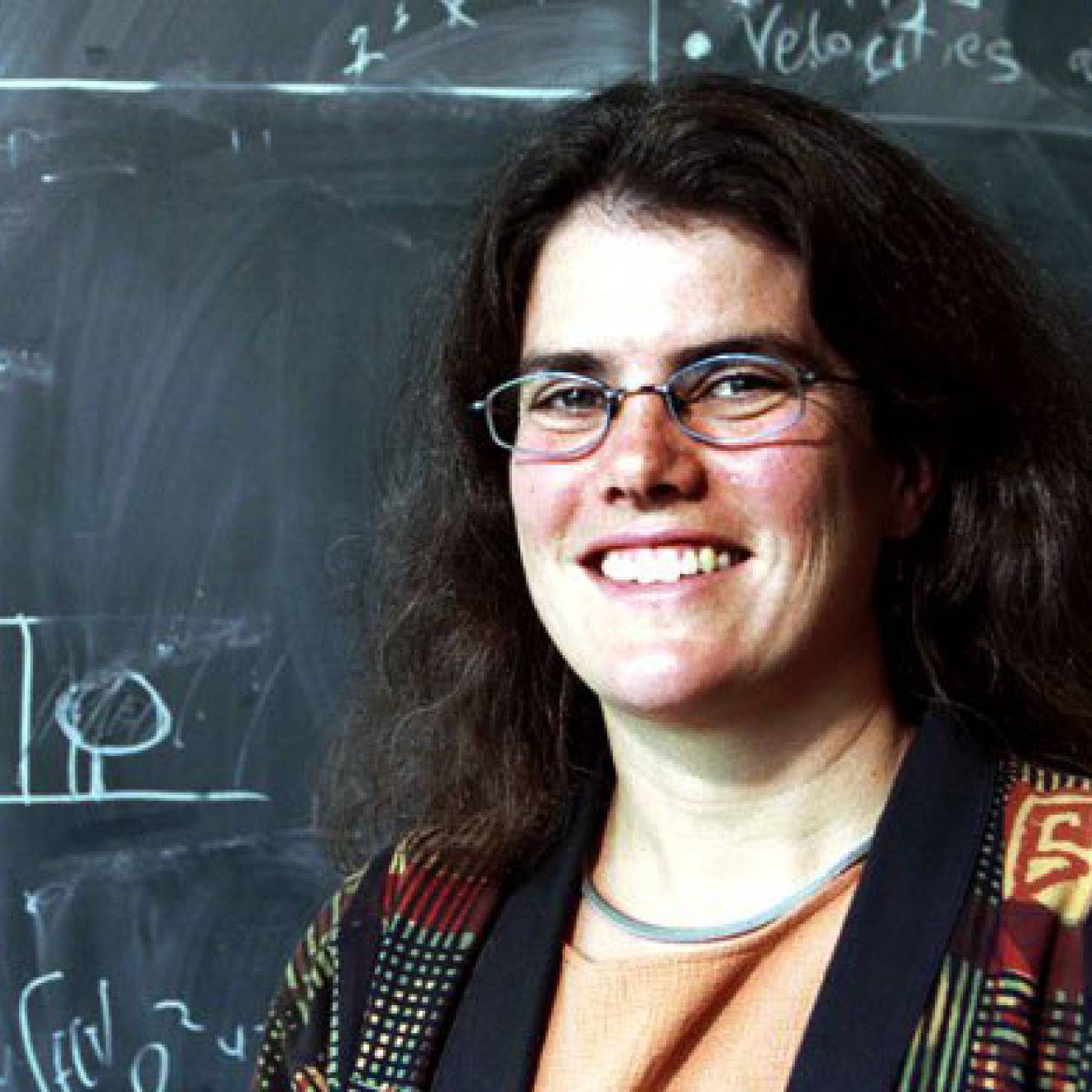Sandra Messick, UC Santa Cruz
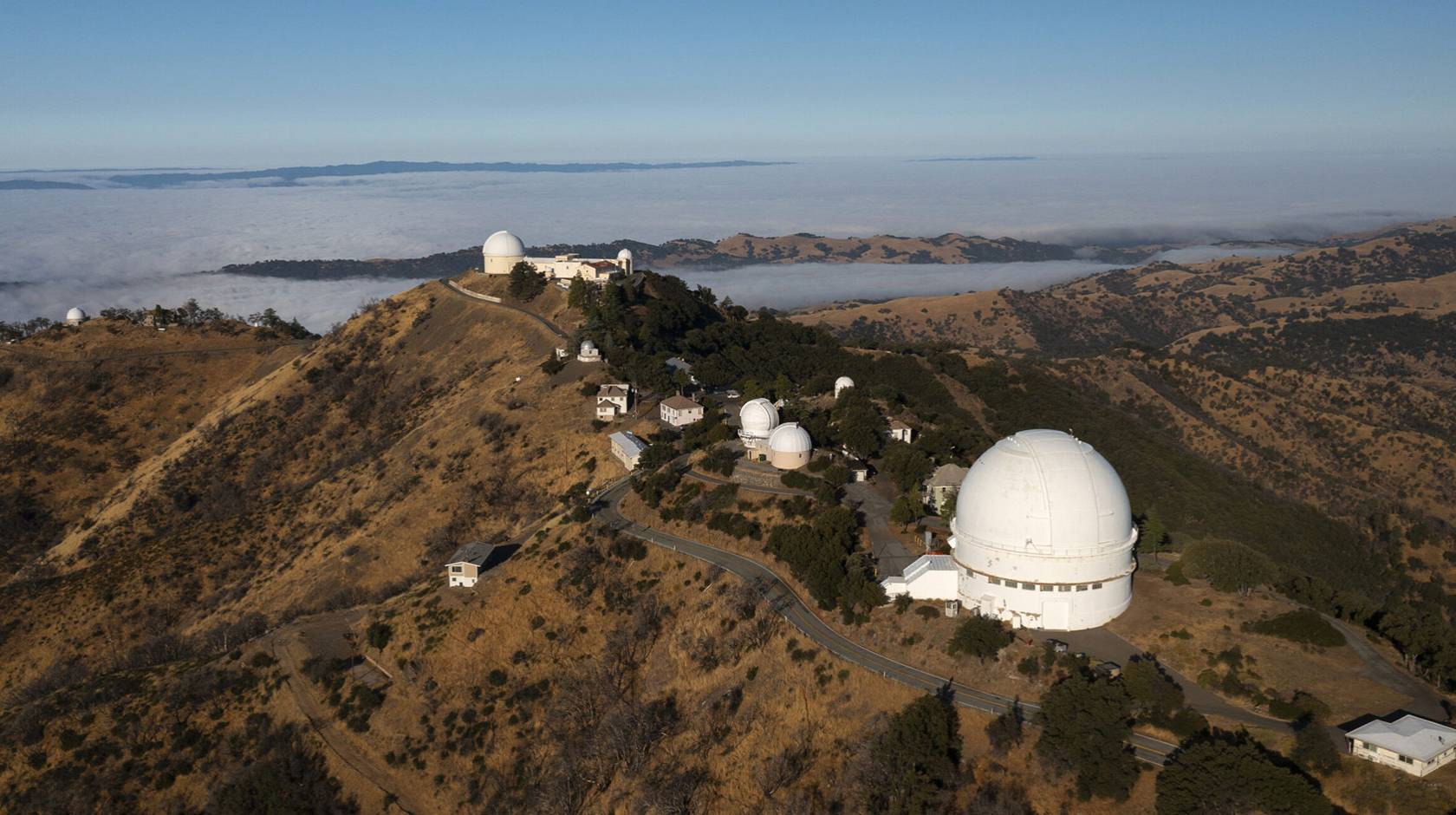
In an elementary school science class, Rav Kaur first learned about stars, planets, and other wonders in the night skies. That introduction to the solar system launched her passion for space exploration and a life path.
“We had a moon journal,” Kaur reminisced. “That was key in getting me involved in observing. From then on, I knew I wanted to study something about space.”
Last fall, Kaur spent her first week as a UC Santa Cruz Ph.D. student in astronomy on the top of Mount Hamilton in the Diablo Range east of San Jose. Every fall, Professor of Astronomy & Astrophysics Andrew Skemer takes the new cohort of first-year graduate students to Lick Observatory. Since it began operating in 1888, the observatory has been at the forefront of discovery and instrument development in astronomy. As part of the University of California Observatories (UCO), it continues to play a vital role in educating scientists and studying the universe.
Over the seven days, the ten graduate students in the cohort learned the most common techniques in observational astronomy, including astrometry, photometry, adaptive optics imaging, and spectroscopy, through four experiments they planned and executed themselves.
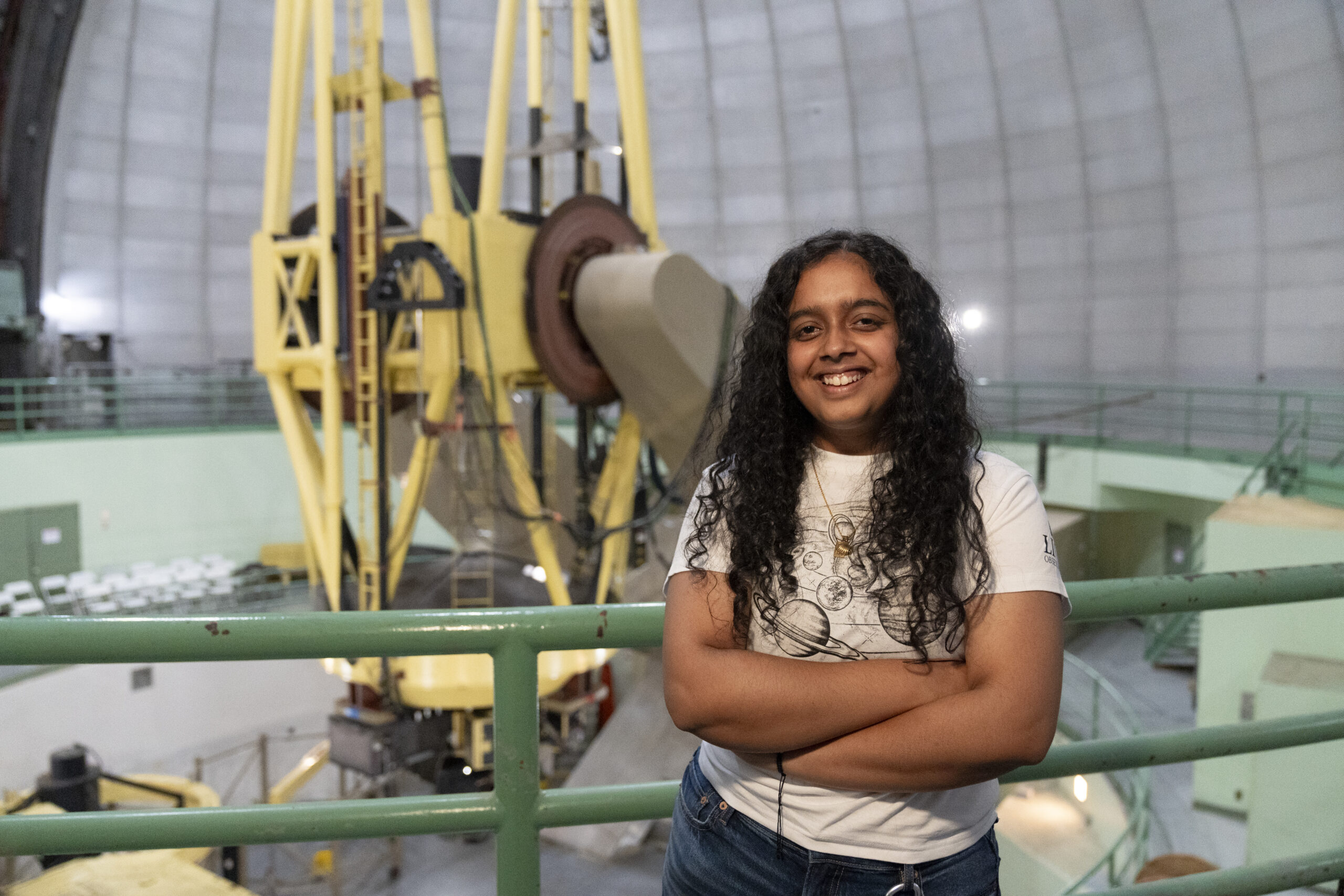
“Observing at a professional observatory is a life-changing experience for the students,” Skemer said. “Lick is a professional observatory, but it’s also part of a university, so it’s okay for students to take their time, make mistakes, and learn by doing.” Skemer researches exoplanets, planets that orbit other stars besides the sun, through direct imaging — taking pictures of the exoplanet.
As an undergraduate at UC Berkeley, Kaur majored in astrophysics and music. She researched gravitational waves caused when two dense objects, such as binary black holes or neutron stars, collide — called a merger — and create ripples. In another project, she helped analyze the detection of a light counterpart to a gravitational wave event. The 2017 counterpart was detected by a research team at UC Santa Cruz led by Assistant Professor of Astronomy and Astrophysics Ryan Foley. It was the first and only time a light counterpart had been captured. Up to now, Kaur has conducted theoretical research. At UC Santa Cruz, she is interested in working with Professor Foley and through observational astronomy, expanding her research to look for visual counterparts to gravitational waves using telescopes at Lick and Keck Observatories.
Lick Observatory
In the late 1800s, James Lick, real-estate entrepreneur and reportedly the richest Californian at the time, wanted to create his legacy. An astronomer in the California Academy of Sciences associated with the University of California suggested he build the world’s largest telescope. Lick bequeathed $700,000, $1.2 billion by today’s standards, and in 1874, the first board for the observatory was established. Two years later, the land was transferred to the University of California through an Act of Congress. It was the first permanently staffed mountain-top observatory and the 36-inch Great Refractor was the world’s largest refracting telescope and continued to be a premier research telescope for half a century.
In 1964, discussions began to move the observatory staff to either UC Berkeley or the University of California’s new campus in Santa Cruz. The new campus was deemed a better fit, resulting in Lick’s transformation from a single mountain-top observatory to UC Santa Cruz becoming the leadership campus for astronomy in the UC, bringing together theoretical and observational astronomers and astrophysicists for research and instruction.
“Just as the University of California was getting founded, it suddenly had one of the best research facilities in the world in the field of astronomy,” said Director of UC Observatories Bruce Macintosh. “And as long as there has been a UC Santa Cruz, astronomy has been one of the areas in which it’s a world leader.”
Lick Observatory serves the nine UC campuses and two national laboratories—Lawrence Berkeley National Lab and Lawrence Livermore National Lab—by providing telescopes for research and technology development every day, aside from the few days the observatory is closed for a holiday or equipment repair.
Ground-breaking discoveries and technology
Some of the ground-breaking discoveries and innovative technology made and tested at Lick include Albert Michelson’s use of interferometry to measure the size of Jupiter’s moons in 1891, which led to him being awarded a Nobel Prize in 1907. Edward Emerson Barnard discovered Jupiter’s fifth moon, later named Amalthea, in 1892, the first after Galileo’s discoveries, and he assisted Lick director Edward Holden in creating a photographic atlas of the moon. James Keeler was the first to study the spectra of stars, helping astronomers understand the types of stars in the galaxy.
In the early 1900s, observations by Lick staff proved the Milky Way is not unique; instead, there are unimaginably large numbers of galaxies. William Campbell, then UCO director, led the most significant solar eclipse expedition in remote Australia, leading to Robert Trumpler’s confirmation of the general theory of relativity. His studies of star clusters resulted in one of the most important discoveries in 20th-century astronomy—that dark matter absorbs light in space.
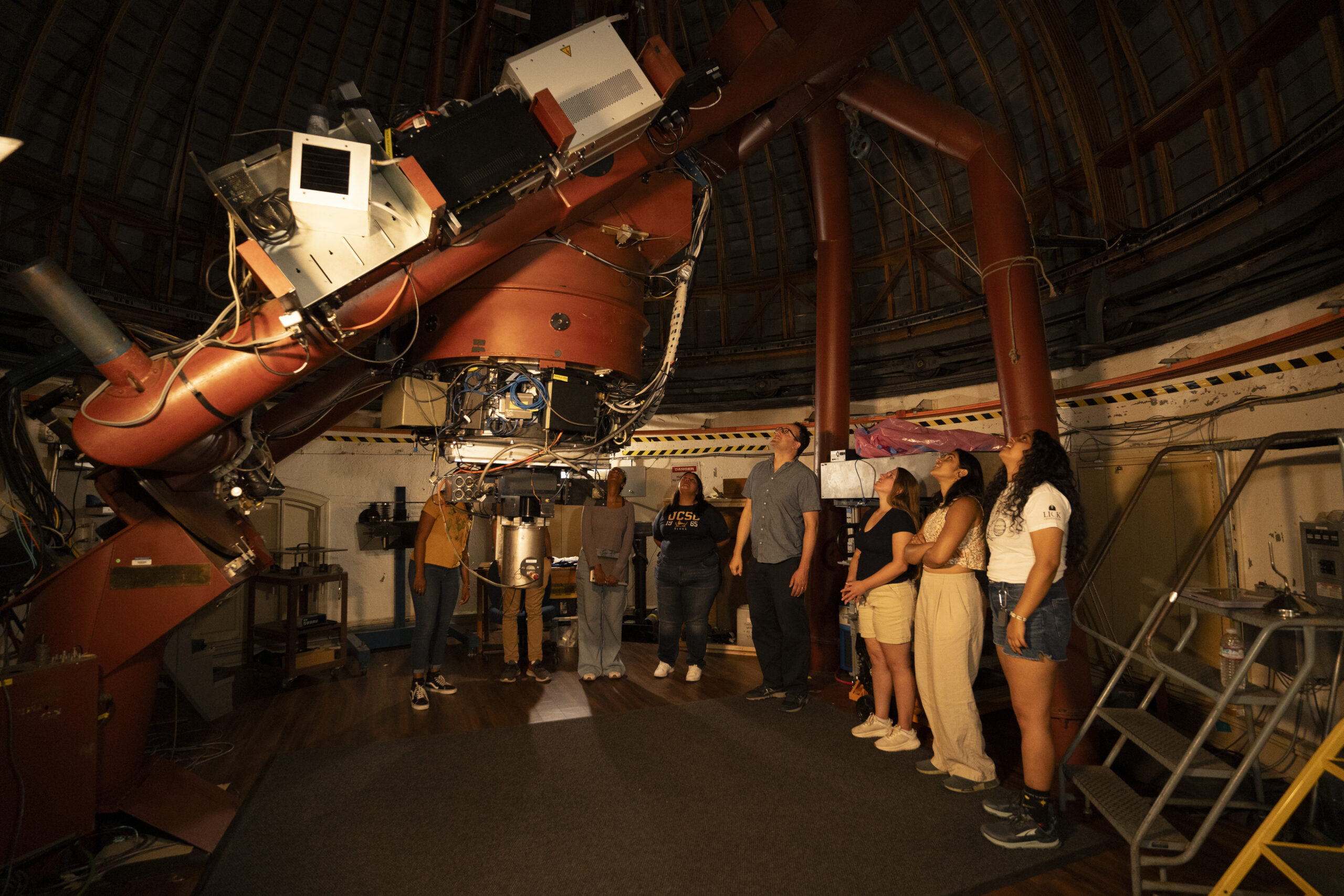
The Shane telescope was commissioned in 1959. For many years, it was the second-largest reflector in the world, and continues to be used for research almost every night. The adaptable three-foci design makes it possible to use many kinds of instruments supporting diverse research and observations. The 120-inch primary mirror was a glass test blank for Caltech’s Palomar telescope. It was made from a new glass that was later named Pyrex—the well-known cooking glass.
In the 1980s and ’90s, Lick’s role turned to the development of new technologies. Many of the first really good digital cameras for astronomy were developed by the staff of UC Santa Cruz and then tested on the telescopes at the observatory. A project led by Claire Max, who later joined UC Santa Cruz and who served as UCO’s director from 2014–21, developed adaptive optics, a technology that enables the capture of ultra-sharp images by telescopes on the ground. This was successfully demonstrated for the first time at Lick.
UC Santa Cruz Emeritus Distinguished Professor of Astronomy & Astrophysics Steven Vogt was one of the astronomers who discovered several of the first 10 extrasolar planets, called exoplanets. Before the 1990s, the only planets we knew about were the eight in our solar system. Vogt’s ultra-precise Hamilton spectrograph was one of the first instruments that could see the tiny wobble that exoplanets cause in their parent star.
Jerry Nelson, former UC Santa Cruz professor emeritus of astronomy and astrophysics, was the principal designer and project scientist of the team that built the 10-meter telescopes for the Keck Observatory, which is more than three times bigger than the Shane telescope at Lick. He pioneered a mirror design made of 36 small hexagonal segments that work in concert as a single piece of reflective glass. The revolutionary design is seen as one of the major turning points in telescope technology. The Keck telescopes are the most powerful optical telescopes on Earth, but are among the most challenging to get research time on, especially for time domain research.
“Lick has become important for projects that are too time-consuming to do at a place like Keck,” Macintosh explained. “If you want to look at the same black hole or galaxy night after night after night for 100 nights, that’s hard to do at Keck, but you can do it at Lick.”
Night observations

“I had looked through telescopes for fun, but not for actual science,” said Kaur. Like her, many new graduate students haven’t observed at a professional research facility before.
During their week on Mt. Hamiliton, the students used three of the observatory’s telescopes—the 40-inch Nickel reflector, the 36-inch Great Refractor, and the Three-meter Shane reflector, Lick’s most powerful telescope. Each day they planned their observations. Using astrometry, the motion of objects, the students replicated the steps that led to the discovery of Pluto. Through photometry they measured the intensity of light, observing an open cluster of stars and determined its age. Using adaptive optics, they took high-resolution images to see how an object in the solar system changed. On the last night, they looked at a galaxy and took a spectrum of it, allowing them to see how fast the stars were rotating around the galaxy’s center. After their observations they analyzed the data they collected.
The students also got to view through the eyepiece of the 36-inch Great Refractor. No longer used for research, it is still an important part of community outreach programs.
Career options
Along with conducting research, the cohort learned about what goes into running and maintaining an observatory and how many people are involved in collecting the data during remote viewing sessions or preparing telescopes for the research requests. While at the Shane telescope, they watched as observatory astronomers changed out the adaptive optics system for the Kast spectrograph for the students’ last night of observations. The process takes about an hour.
“It was really lovely getting to talk to all the staff and learn their paths to how they got to working up there, what they do in their jobs, and how that all works,” Kaur shared. “And it opened up career ideas for some of us. We didn’t know that you could be a staff scientist at an observatory.”
Into the future
At the crossroads of history and innovation, the observatory continually redefines what’s possible in astronomy. Donor support empowers the development of advanced technologies, pioneering solutions, and groundbreaking discoveries. It also plays a vital role providing UC Santa Cruz and other Bay Area students and community members access to the observatory, its telescopes, and learning opportunities.
“There’s a moment in every astronomer’s backstory when you’re at a telescope and you see something for the first time that you only ever saw in a book or on the internet,” Macintosh said. “Bringing that moment to as many people as possible is something that is really important.”
Through donor support, programs such as the Scientific Teaching through Astronomy Research(STARs) program, funded by a grant from the Gordon and Betty Moore Foundation, expand Lick’s Bay Area education and outreach programs through partnerships with K–12 schools, two- and four-year colleges and universities, and informal learning venues such as museums and libraries. Other gifts cover the costs for even undergraduate students to participate in degree-defining experiences on Mt. Hamilton and support the popular summer concerts and education series for the public.
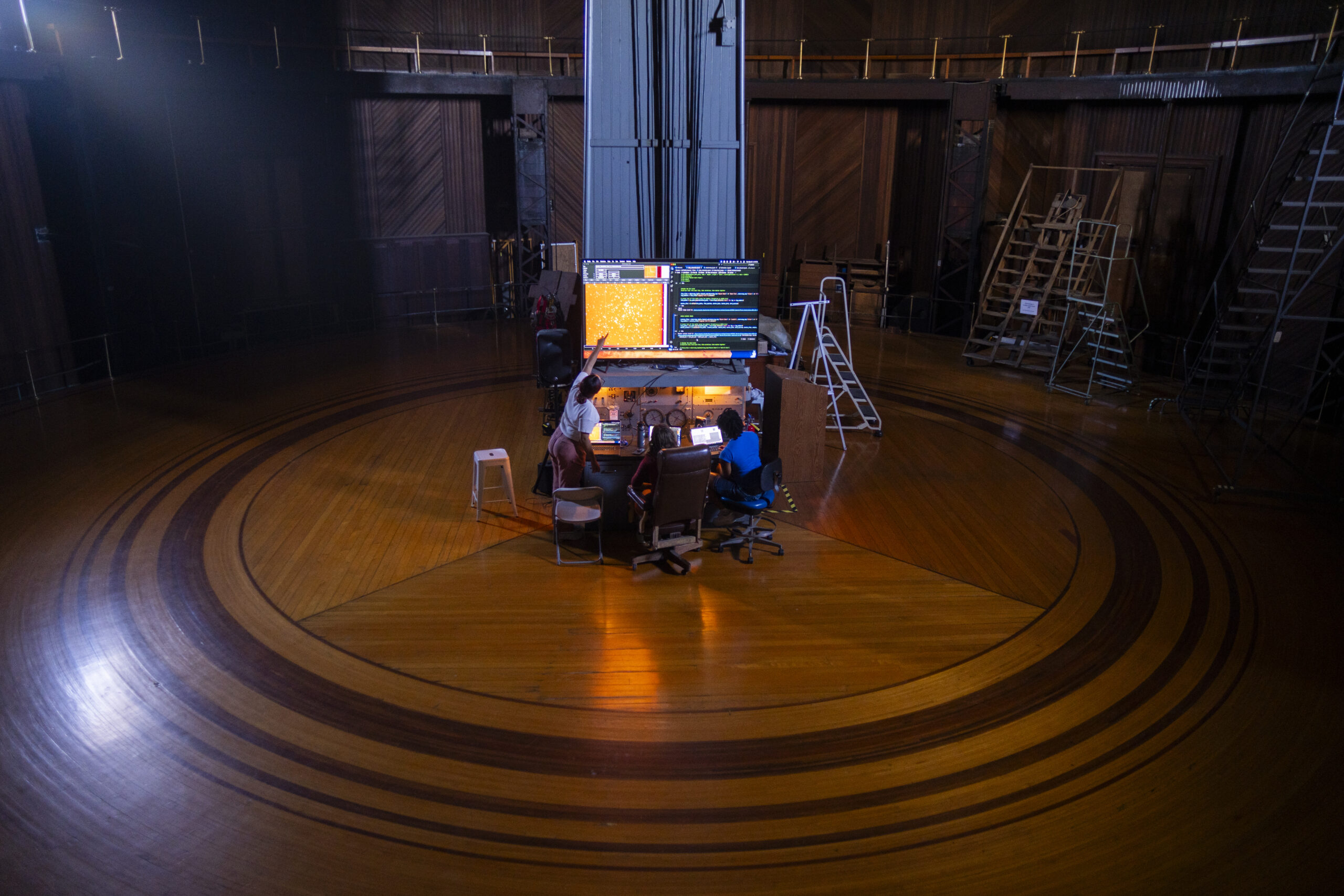
As the observatory approaches its 150th year, Lick leaders are looking to modernize the facility to increase access and strengthen its ability to support education and research. Two priority areas are the renovation of the second floor of the old dormitory building, which would make it possible for more students to participate in classes and take part in hands-on learning opportunities. and research. And everyone would like to see the circular wooden floor with beautiful 19th-century steampunk technology repaired—finally putting the original telescope eyepiece back within reach of all visitors to inspire the public for the next 150 years.
